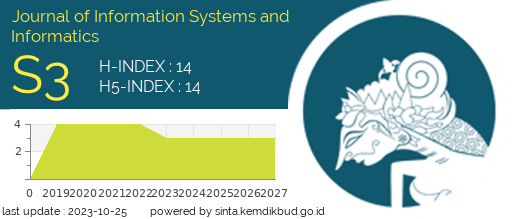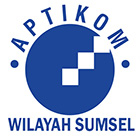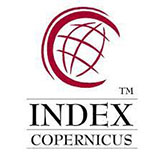Web and Mobile Data Management System for Garongan Asri Garbage Bank: A Case Study
Abstract
This research addresses the inefficiencies of manual garbage data management by developing a dual-platform system: a website-based application for Garongan Asri Garbage Bank staff and a mobile application for customers. Utilizing the waterfall method for systematic development, the project involved stages of analysis, design, coding, testing, support, and maintenance. Key technologies used include the Bootstrap framework, Visual Studio Code, Android Studio, and MySQL database. The resulting website application enables staff to efficiently manage garbage data, while the mobile app allows customers to access their disposal history. The effectiveness of these applications was confirmed through black box testing, demonstrating their functionality and suitability for improving garbage data management and customer service.
Downloads
References
A. Sansprayada dan K. Mariskhana, “Implementasi Aplikasi Bank Sampah Berbasis Android Studi Kasus Perumahan Vila Dago Tangerang Selatan,” JII : Jurnal Inovasi Informatika Universitas Pradita, vol. 5, no. 1, hlm. 24–34, 2020.
A. Syarifudin, “Per Hari, Volume Sampah di Sleman Capai 738 Ton,” tribunjogja.com. Diakses: 19 Oktober 2023. [Daring]. Tersedia pada: https://jogja.tribunnews.com/2023/02/21/per-hari-volume-sampah-di-sleman-capai-738-ton
O. Ramdhani, I. Yustiana, dan A. Fergina, “Rancang Bangun Sistem Informasi Bank Sampah Menggunakan Metode Prototype (Studi Kasus Di Kampung Lembur Sawah, Sukabumi),” Jurnal Ilmiah Penelitian dan Pembelajaran Informatika, vol. 7, no. 3, hlm. 757–767, 2022.
Hashina Adinda, Fitriana Gita Fadila, dan Tanjung Nia Annisa Ferani, “Pengembangan Aplikasi Pengelolaan Sampah Berbasis Android Studi Kasus Bank Sampah Desa Kalibagor,” Data Science, Information Technology, and Data Analytics, vol. 2, no. 2, hlm. 97–102, 2022.
K. Utami, Z. Rialmi, R. Nugraheni, F. Ekonomi, dan D. Bisnis, “Analisis Perencanaan Aplikasi Bank Sampah Digital Studi Kasus pada Bank Sampah Solusi Hijau,” Jurnal Penelitian Manajemen Terapan (PENATARAN), vol. 7, no. 1, hlm. 34–49, 2022.
Silfiah Rossa Ilma, Mohtarom Ali, dan Ulum Kuni Muqtaniyatul, “Digitalisasi Bank Sampah dengan Penerapan Sistem Aplikasi Resik di Desa Karangsono Kecamatan Sukorejo Kabupaten Pasuruan,” Jurnal Applikasi Dan Inovasi Iptek SOLIDITAS, vol. 4, no. 2, hlm. 143–154, 2021, doi: 10.31328/js.v4i2.2674.
Wardany Kusuma, Sari Reni Permata, dan Mariana Erni, “Sosialisasi Pendirian ‘Bank Sampah’ Bagi Peningkatan Pendapatan Dan Pemberdayaan Perempuan Di Margasari,” Dinamisia: Jurnal Pengabdian Kepada Masyarakat, vol. 4, no. 2, hlm. 364–372, Jun 2020, doi: 10.31849/dinamisia.v4i2.4348.
F. N. Amaliah, “Peran Pengelola Bank Sampah Ramah Lingkungan (Ramli) Dalam Pemberdayaan Masyarakat Di Perumahan Graha Indah Kota Samarinda,” Jurnal Program Studi Pendidikan Masyarakat, vol. 1, no. 2, hlm. 18–22, 2020.
E. R. Pamungkas, D. Susanti, dan D. Resmanah, “Aplikasi Bank Sampah Berbasis Web Di Desa Teja,” Proceeding SENDIU, 2020.
F. H. Rahmah dan Theresiawati, “Aplikasi Bank Sampah Berkah Melimpah Berbasis Website pada Kelurahan Nanggewer,” Jurnal Informatik, vol. 18, no. 2, 2022.
W. S. Wardhana, H. Tolle, dan A. P. Kharisma, “Pengembangan Aplikasi Mobile Transaksi Bank Sampah Online Berbasis Android (Studi Kasus: Bank Sampah Malang),” Jurnal Pengembangan Teknologi Informasi dan Ilmu Komputer, vol. 3, no. 7, hlm. 6548–6555, 2019.
Q. Fildzah, C. Vikasari, dan N. Rahadi, “Implementasi Model Prototype untuk Pengembangan Sistem Informasi Bank Sampah Enviro 18,” Journal of Innovation Information Technology and Application (JINITA), vol. 4, no. 1, hlm. 12–20, Jun 2022, doi: 10.35970/jinita.v4i1.1053.
N. Hidayati, “Penggunaan Metode Waterfall Dalam Rancang Bangun Sistem Informasi Penjualan,” Generation Journal, vol. 3, no. 1, hlm. 2580–4952, 2019.
V. Adi Kurniyanti dan D. Murdiani, “Perbandingan Model Waterfall Dengan Prototype Pada Pengembangan System Informasi Berbasis Website,” Jurnal Syntax Fusion, vol. 2, no. 08, hlm. 669–675, Agu 2022, doi: 10.54543/fusion.v2i08.210.
N. Nuraeni dan P. Astuti, “Rancang Bangun Sistem Informasi Penjualan Online (E-Commerce) Pada Toko Batik Pekalongan Dengan Metode Waterfall,” JURNAL TEKNIK KOMPUTER AMIK BSI, vol. 5, no. 2, hlm. 197–202, 2019, doi: 10.31294/jtk.v4i2.
D. W. T. Putra dan R. Andriani, “Unified Modelling Language (UML) dalam Perancangan Sistem Informasi Permohonan Pembayaran Restitusi SPPD,” Jurnal TEKNOIF, vol. 7, no. 1, 2019.
K. ’Afiifah, Z. Fira Azzahra, A. D. Anggoro, D. Redaksi, R. Akhir, dan D. Online, “Universitas Negeri Jakarta; Jl. Rawamangun Muka Raya No.11 RW.14 Rawamangun,” JURNAL INTECH, vol. 3, no. 1, hlm. 8–11, 2022.
V. Febrian, M. R. Ramadhan, M. Faisal, dan A. Saifudin, “Pengujian pada Aplikasi Penggajian Pegawai dengan menggunakan Metode Blackbox,” Jurnal Informatika Universitas Pamulang, vol. 5, no. 1, hlm. 2622–4615, 2020.
 Abstract views: 1336 times
Abstract views: 1336 times Download PDF: 952 times
Download PDF: 952 times
Copyright (c) 2023 Journal of Information Systems and Informatics

This work is licensed under a Creative Commons Attribution 4.0 International License.
- I certify that I have read, understand and agreed to the Journal of Information Systems and Informatics (Journal-ISI) submission guidelines, policies and submission declaration. Submission already using the provided template.
- I certify that all authors have approved the publication of this and there is no conflict of interest.
- I confirm that the manuscript is the authors' original work and the manuscript has not received prior publication and is not under consideration for publication elsewhere and has not been previously published.
- I confirm that all authors listed on the title page have contributed significantly to the work, have read the manuscript, attest to the validity and legitimacy of the data and its interpretation, and agree to its submission.
- I confirm that the paper now submitted is not copied or plagiarized version of some other published work.
- I declare that I shall not submit the paper for publication in any other Journal or Magazine till the decision is made by journal editors.
- If the paper is finally accepted by the journal for publication, I confirm that I will either publish the paper immediately or withdraw it according to withdrawal policies
- I Agree that the paper published by this journal, I transfer copyright or assign exclusive rights to the publisher (including commercial rights)






















_1.png)












